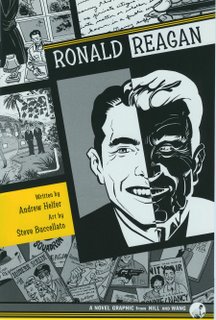Graphic Lit -- 4/23 and more
"Penny Arcade: Attack of the Bacon Robots"
by Jerry Holkins and Mike Krahulik
Dark Horse Comics, $12.95.

Easily the most popular Web comic right now, "Penny Arcade" has attracted a devout cult following for its irreverent humor and laserlike focus on the video game industry. This collection of strips focuses on the strip’s early, formative years, with commentary from Holkins.
Sadly, few of the strips are any good. Most have aged badly, with dated references to games that have long since been forgotten, and art that seems stilted compared with where the strip is today. A best-of-collection would have better served the uninitiated.
"Canvas"
by Alex Fellows

Fantagraphics Books, 80 pages, $9.95.
A surreal edge is added to this otherwise involving tale of adolescent insecurity and sexual awakening as the title character's parents are portrayed as a pig and a frog. While this odd masking does help to underline young Canvas' feeling of alienation from her family, it's Fellows' ear for dialogue and eye for understatement that really make this short novella stand out. Fellows' characters can seem a bit stiff and stilted at times, but this is an impressive debut nonetheless.
"Same Difference and Other Stories"
by Derek Kirk Kim
Top Shelf, $12.95.

The title tale is the main reason to pick up this collection of short stories by the relatively new-to-the-scene Kim. Focusing on a pair of twentysomething friends who are forced to confront the recipient of a thoughtless prank, "Same Difference" shows a remarkable humanism and insight that most of his young peers simply don't have. It's a shame, but really no surprise, that most of the other stories in this volume fail to reach the same heights.
Whatever his faults, Kim is an extremely agile cartoonist, and those who pick up this book will be looking to see what he does in the future.
"Drawn & Quarterly Showcase Vol. 2"
Drawn & Quarterly, $14.95.

Pentti Otsamo, Jeffrey Brown and Erik de Graaf all make contributions to the second edition of Drawn & Quarterly's latest anthology title, designed to highlight new and underrated comic artists. Both Otsamo and de Graaf's stories are good, but it's Brown's completely unsettling tale of a man whose co-worker may or may not have murdered a little girl that really sticks with the reader. His sketchy, cartoonish style serves to underscore the story's overall creepiness.
Copyright The Patriot-News, 2006
































